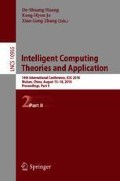Abstract
To automatically segment the geographic atrophy (GA) in spectral-domain optical coherence tomography (SD-OCT) images, we propose a novel segmentation method by designing a multi-path 3D convolution neural network (CNN) model in this paper. Firstly, the 3D patch was fed into the multi-path 3D CNN model as sample to preserve spatial features and overcome the excessive dependence of layer segmentation. Then, an improved classifier was trained by the optimization of network structure and the combination of softmax loss and center loss. The proposed method has been evaluated in two data sets, including fifty-five and fifty-six cubes respectively. For the two data sets, our method obtained the mean overlap ratio (OR) 87.24% ± 7.95% and 75.89% ± 15.11%. Compared with the state-of-the-art-algorithms on these two data sets, the mean OR of our results have been improved 5.38% and 5.89% respectively, indicating that our method can get higher segmentation accuracy.
Access this chapter
Tax calculation will be finalised at checkout
Purchases are for personal use only
References
Bressler, N.M.: Age-related macular degeneration is the leading cause of blindness. JAMA 291(15), 1900–1901 (2004)
Bhutto, I., Lutty, G.: Understanding age-related macular degeneration (AMD): relationships between the photoreceptor/retinal pigment epithelium/Bruch’s membrane/choriocapillaris complex. Mol. Aspects Med. 33(4), 295–317 (2012)
Nunes, R.P., Gregori, G., Yehoshua, Z., et al.: Predicting the progression of geographic atrophy in age-related macular degeneration with SD-OCT en face imaging of the outer retina. Ophthalmic Surg. Lasers Imaging Retina 44(4), 344–359 (2013)
Niemeijer, M., Van Ginneken, B., Staal, J., et al.: Automatic detection of red lesions in digital color fundus photographs. IEEE Trans. Med. Imaging 24(5), 584–592 (2005)
Spaide, R.F.: Fundus autofluorescence and age-related macular degeneration. Ophthalmology 110(2), 392–399 (2003)
Garvin, M.K., Abramoff, M.D., Wu, X., et al.: Automated 3-D intraretinal layer segmentation of macular spectral-domain optical coherence tomography images. IEEE Trans. Med. Imaging 28(9), 1436–1447 (2009)
Quellec, G., Lee, K., Dolejsi, M., et al.: Three-dimensional analysis of retinal layer texture: identification of fluid-filled regions in SD-OCT of the macula. IEEE Trans. Med. Imaging 29(6), 1321–1330 (2010)
Chiu, S.J., Izatt, J.A., O’Connell, R.V., et al.: Validated automatic segmentation of AMD pathology including drusen and geographic atrophy in SD-OCT images. Invest. Ophthalmol. Vis. Sci. 53(1), 53–61 (2012)
Yamashita, T., Yamashita, T., Shirasawa, M., et al.: Repeatability and reproducibility of subfoveal choroidal thickness in normal eyes of Japanese using different SD-OCT devices. Invest. Ophthalmol. Vis. Sci. 53(3), 1102–1107 (2012)
Tsechpenakis, G., Lujan, B., Martinez, O., et al.: Geometric deformable model driven by CoCRFs: application to optical coherence tomography. In: International Conference on Medical Image Computing and Computer-Assisted Intervention, pp. 883–891 (2008)
Chen, Q., de Sisternes, L., Leng, T., et al.: Semi-automatic geographic atrophy segmentation for SD-OCT images. Biomed. Opt. Express 4(12), 2729–2750 (2013)
Niu, S., de Sisternes, L., Chen, Q., et al.: Automated geographic atrophy segmentation for SD-OCT images using region-based CV model via local similarity factor. Biomed. Opt. Express 7(2), 581–600 (2016)
Wang, S., Chen, L., Xu, L., et al.: Deep knowledge training and heterogeneous CNN for handwritten Chinese text recognition. In: 15th International Conference on Frontiers in Handwriting Recognition (ICFHR), pp. 84–89. IEEE (2016)
Qi, C.R., Su, H., Nießner, M., et al.: Volumetric and multi-view CNNs for object classification on 3D data. In: Proceedings of the IEEE Conference on Computer Vision and Pattern Recognition, pp. 5648–5656 (2016)
Kamnitsas, K., Ledig, C., et al.: Efficient multi-scale 3D CNN with fully connected CRF for accurate brain lesion segmentation. Med. Image Anal. 36, 61–78 (2017)
Ji, Z., Chen, Q., Niu, S., et al.: Beyond retinal layers: a deep voting model for automated geographic atrophy segmentation in SD-OCT images. Transl. Vis. Sci. Technol. 7(1), 1 (2018)
Cameron, A., Lui, D., Boroomand, A., et al.: Stochastic speckle noise compensation in optical coherence tomography using non-stationary spline-based speckle noise modelling. Biomed. Opt. Express 4(9), 1769–1785 (2013)
Garcia-Garcia, A., Orts-Escolano, S., Oprea, S., et al.: A review on deep learning techniques applied to semantic segmentation. arXiv preprint arXiv:1704.06857 (2017)
Yu, L., Chen, H., Dou, Q., et al.: Integrating online and offline three-dimensional deep learning for automated polyp detection in colonoscopy videos. IEEE J. Biomed. Health Inform. 21(1), 65–75 (2017)
Wen, Y., Zhang, K., Li, Z., Qiao, Yu.: A discriminative feature learning approach for deep face recognition. In: Leibe, B., Matas, J., Sebe, N., Welling, M. (eds.) ECCV 2016. LNCS, vol. 9911, pp. 499–515. Springer, Cham (2016). https://doi.org/10.1007/978-3-319-46478-7_31
Acknowledgement
The work is supported by the National Natural Science Foundation of China under Grant No. 61701192, the Natural Science Foundation of Shandong Province, China, under Grant No. ZR2017QF004, China Postdoctoral Science Foundation under Grants No. 2017M612178, the Shandong Provincial Key R&D Program (2016ZDJS01A12), the National Key Research and Development Program of China (No. 2016YFC0106000), Shandong Province Natural Science Foundation (No. ZR2018LF005).
Author information
Authors and Affiliations
Corresponding author
Editor information
Editors and Affiliations
Rights and permissions
Copyright information
© 2018 Springer International Publishing AG, part of Springer Nature
About this paper
Cite this paper
Xu, R., Niu, S., Gao, K., Chen, Y. (2018). Multi-path 3D Convolution Neural Network for Automated Geographic Atrophy Segmentation in SD-OCT Images. In: Huang, DS., Jo, KH., Zhang, XL. (eds) Intelligent Computing Theories and Application. ICIC 2018. Lecture Notes in Computer Science(), vol 10955. Springer, Cham. https://doi.org/10.1007/978-3-319-95933-7_58
Download citation
DOI: https://doi.org/10.1007/978-3-319-95933-7_58
Published:
Publisher Name: Springer, Cham
Print ISBN: 978-3-319-95932-0
Online ISBN: 978-3-319-95933-7
eBook Packages: Computer ScienceComputer Science (R0)

